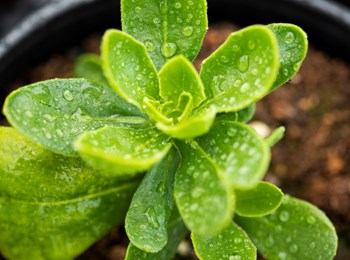Q&A with Alan Frampton of Cambridge HOK
Fargro is proud to be partnered with CambridgeHOK, bringing innovative technologies to horticulture. Our partnership allows us to bring best-in-breed solutions such as climate control, energy and lighting solutions to our customers.
What innovations in greenhouse constructions should growers be aware of?
Building a greenhouse today is totally different to what it was 30 years ago, built with a design to capture sunlight in the winter and keep the heat in as much as possible, they were subjected to regular damage from storms and high winds. These days the greenhouses are structurally extremely strong, think more cathedral than an old garden greenhouse, so they can deal with high winds and storms.
From a horticultural point of view, current greenhouses with their heating and ventilation systems, fast pumps and boiler houses combined with good computer control, you have control over one of your biggest inputs, which is energy. Making sure these aspects are as tight as possible is a must-have. Modern burners are critical, generating heat efficiently whilst benefitting from CO2 off of the flue gases and low-grade heat from Condensers. Heat storage tanks are immensely valuable in terms of satisfying the early morning heat demand of crops and enabling boilers to run at a constant efficiency throughout the day
What is the most important aspect of moving forward and evolving within the industry
The attention to detail now is the essence of how we drive horticulture forward in this country and take on the two biggest challenges the industry faces - reducing labour and energy costs. Technologies will also help the industry to be more sustainable and environmentally friendly, as climate change becomes ever clearer and more prevalent in the way we think moving forward. Robotics to save labour and Fossil fuel-free heating systems are now realities in some sites.
Have you come across any companies that have reaped the rewards of this technology?
Last spring, I was very privileged to work with a company that had been through a tough time when they called me in. The boss was horticulturally fantastic, a real gentleman – but the company had been through a tough time and they hadn’t made a margin in many years. As many will know in horticulture, we feel privileged if we’ve had 3 good years in 10 and this is what had happened with this company. Eventually they made some significant investments and we also had serious discussions about the younger and older horticulture generation working together, I’m happy to report sales have doubled and we managed to get the two working in harmony.
What role will technology play in helping the industry to evolve in the coming years?
The cost per hour of horticultural labour has risen dramatically which is driving the quality of robotics, especially in soft fruit and protected edibles. There’s a lot of investment going into new harvesting machines and with the technology that is now available it’s no longer a question of ‘if’ it's ‘when’. It is going to revolutionise the production of UK crops across sectors. Glasshouses and cropping systems are being designed with robotics in mind.
The other thing I would say is it is difficult for smaller growers to invest in things like robotics, it’s about productivity per square metre. I think you need to be using a piece of equipment for 27-30 hours a week to save labour to make the capital investment. Small growers usually have a niche market and get a better return per unit of production. Robotics will enter Horticulture on the big sites but the technology will filter down and the smaller growers will benefit.
How has climate change influenced the industry and its ways of working?
We see huge increases in prices in fossil fuels and we can’t continue to put the thousands of tonnes of CO2 from heated glasshouses into the atmosphere, so we’re looking at how to reduce that. Combined heat and unit power are suddenly more interesting than they used to be where you can get the CO2 off the exhaust gasses as well as the electricity and the heat. There is no question that the next 20 years are going to be immensely challenging. Hydrogen usage is 5-10 years off but air sourced heat pumps and ground sourced heat pumps are here now.
How do you see vertical farming playing out in the UK?
Vertical farming is like growing in a box, you’re controlling the irrigation, the temperature, the CO2, the light - you don’t need any natural inputs. It’s quite useful in the UK if you’re producing something close to the market. Basil, for example. If you’re growing in London, you can harvest your basil in the morning, and it can be in the restaurants by lunch and meet demand.
With vertical farming and growing crops in areas where you can’t otherwise grow (think Iceland) where there is a demand for the food, being able to produce it means you could create a market. The whole automation is astounding. So, if you take that sort of thinking to vertical farming situation, I see vertical farming being able to produce products that in the right place will do very well. Great for leafy salads, herbs and they are now doing trials on other mainstay crops like tomatoes and cucumbers.
About CambridgeHOK
CambridgeHOK is a forward-thinking, dynamic engineering, energy and construction company that specialises in the design and development of commercial glasshouses, Garden Centres and automated vertical farms. CambridgeHOK consistently delivers energy-efficient innovations across the UK, bringing cost savings in excess of 25% through innovative combined heat and power systems.
Across four divisions, and with a purpose-built manufacturing facility in the heart of Yorkshire, their team includes talented and experienced structural engineers, mechanical cooling and ventilation engineers, computer control engineers, electrical engineers, project managers, designers, skilled installers and factory operatives.

